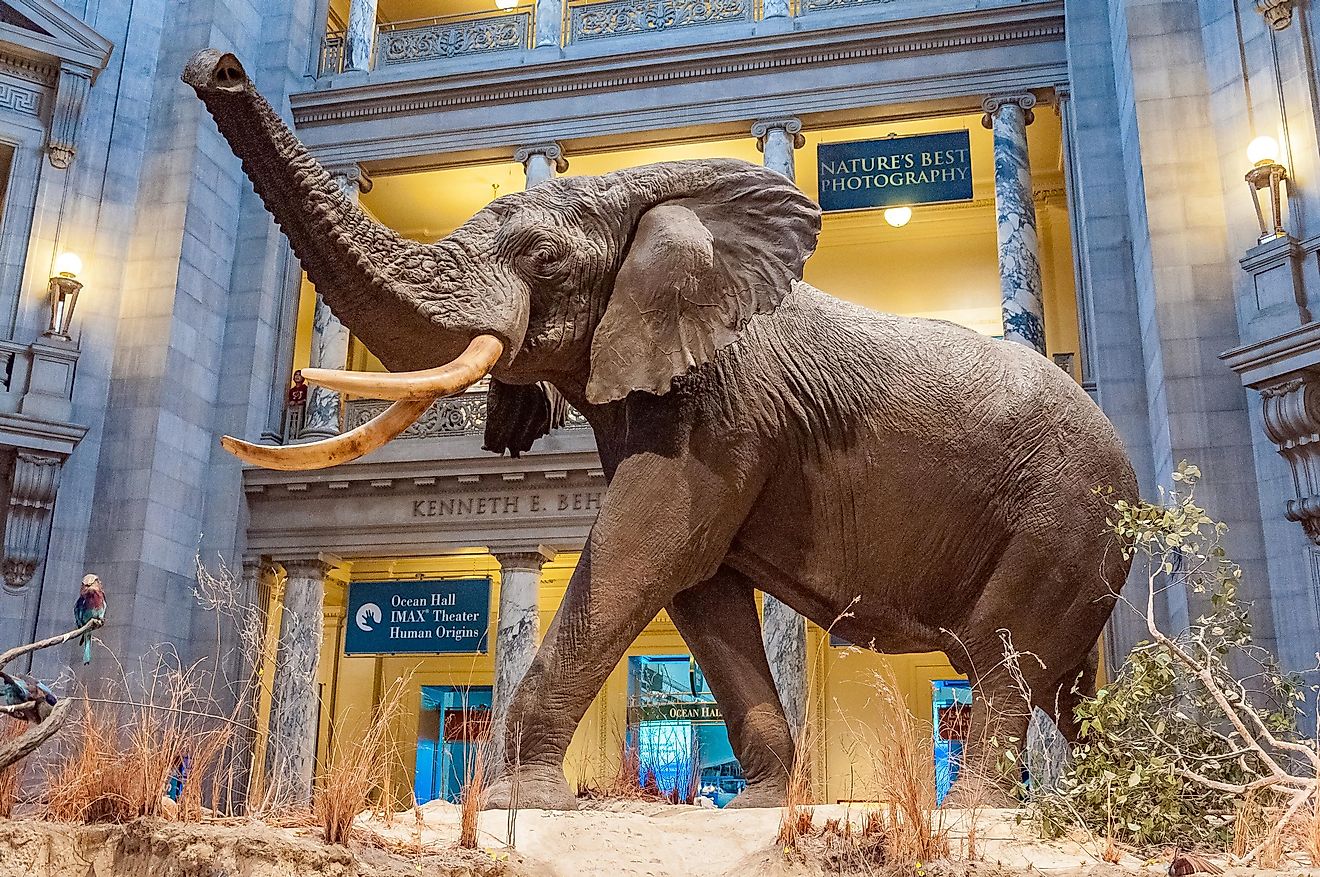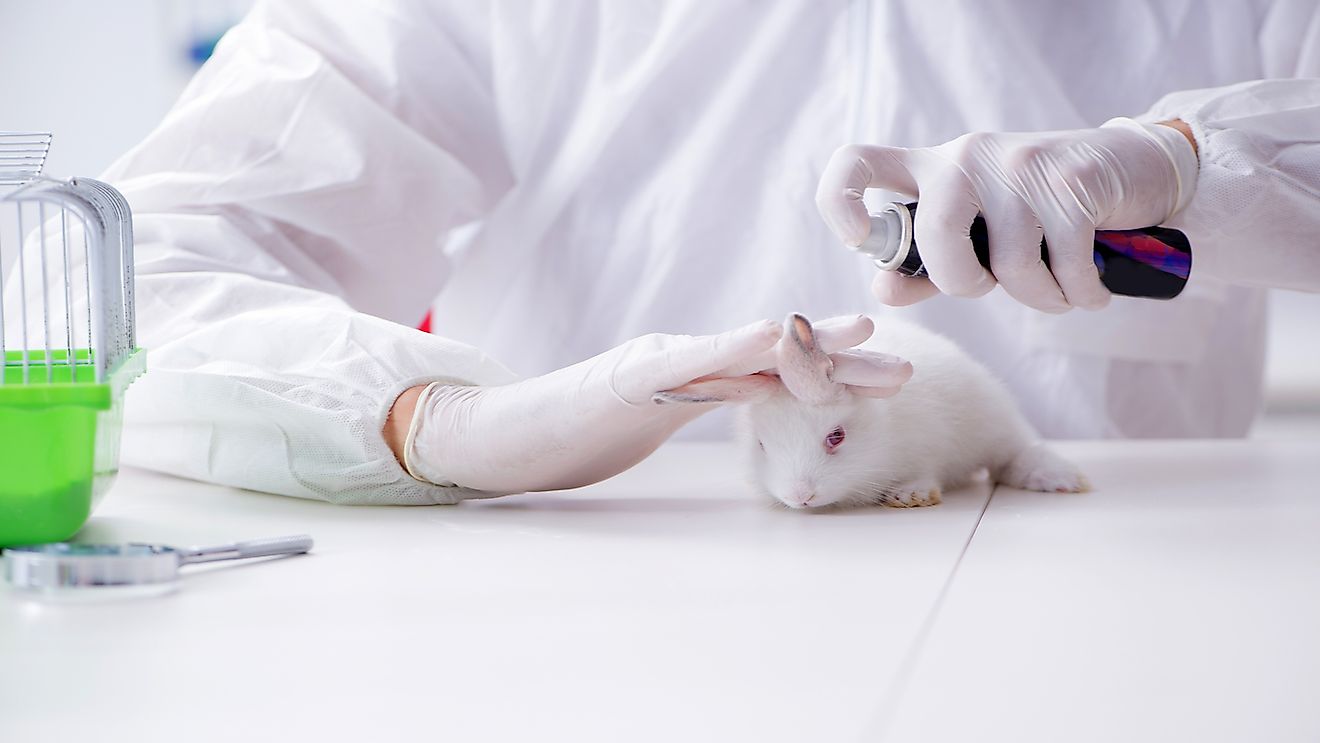10 Animals That Are Asymmetrical
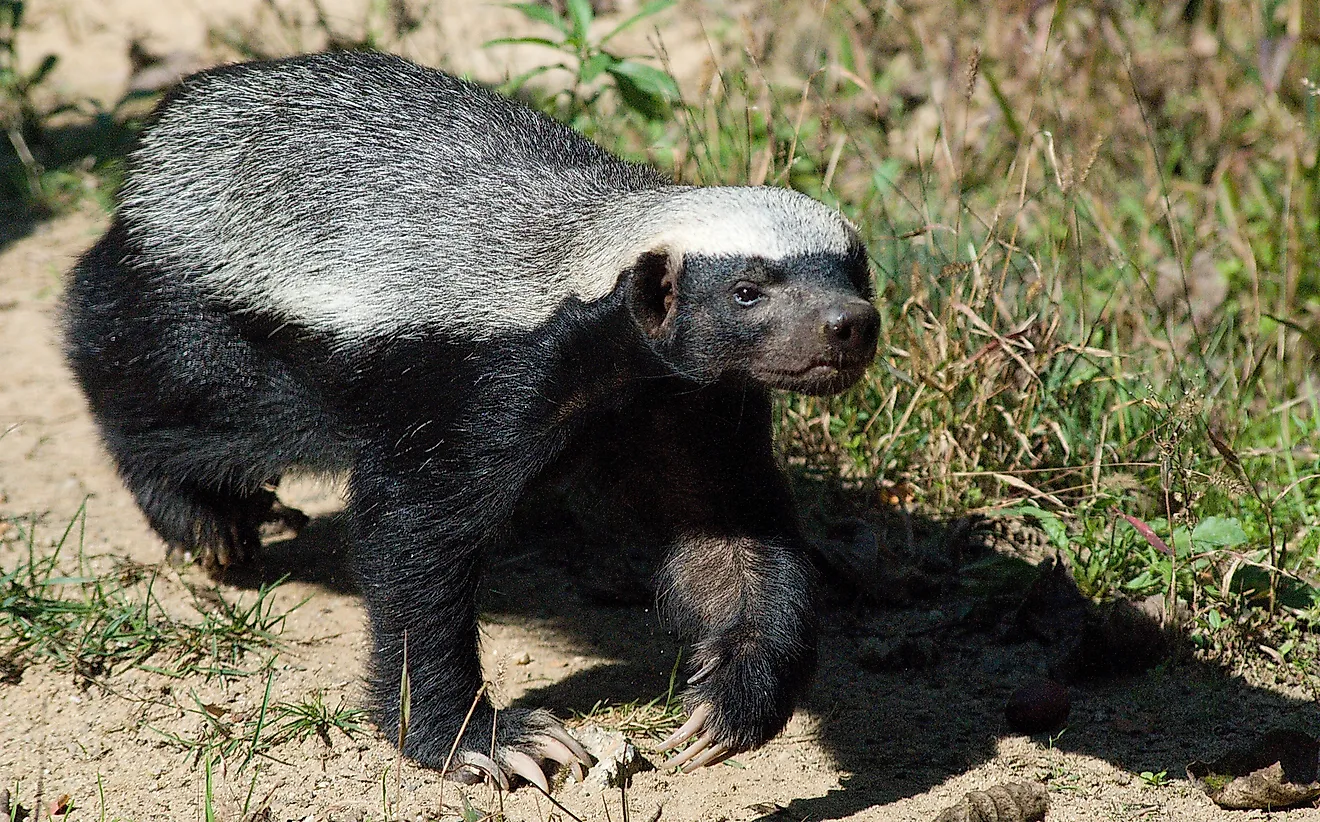
Most animals exhibit external radial symmetry and internal asymmetry. Morphological symmetry in animals refers to the correspondence of different external body-parts in both shape, size, and position on opposite sides. The internal organs of most animals are asymmetrical. However, some animals exhibit radial asymmetry, both internally and externally. Asymmetry is a rare characteristic in plants and animals that has evolved independently over time. Some of the animals that exhibit external asymmetry include:
Plaice
Plaice refers to a group of flatfish that is made up of 4species (scale-eye, Alaskan, American, and European plaice). European plaice is the main commercial flatfish species in Europe, and it can be kept in an aquarium. Young plaices are symmetrical; however, as they grow and spend most of their time on the sea bed, one eye grows on the side facing upwards. European and American plaices are right-eyed flounders belonging to the Pleuronectidae family. European plaice moves in shallow water at night to feed and bury itself in the sand during the day. America plaice is an Atlantic species whose terrain ranges from Rhode Island to Labrador. American plaice are reddish or brownish and are smaller than the European plaice.
Wrybill
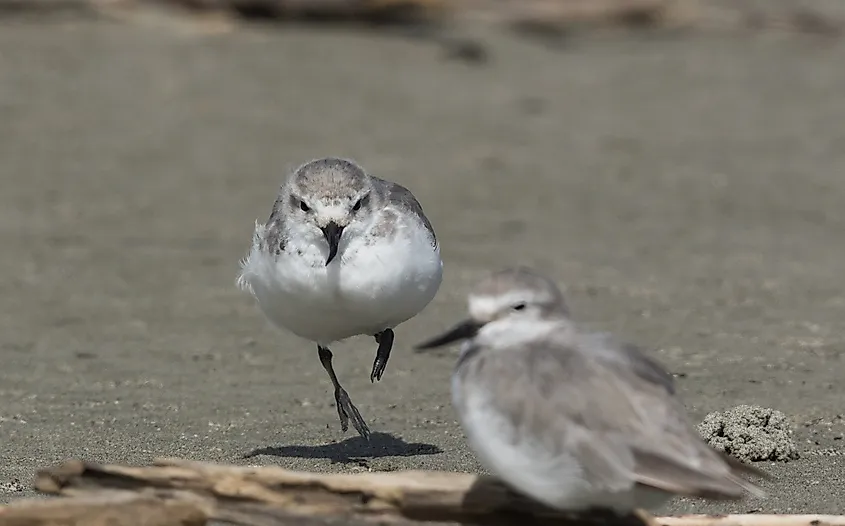
Wrybills, also known as ngutuparore, is a species of plovers that can be found in New Zealand. Wrybills have long black bills that are curved to the right. Wrybills are small plump plovers weighing about 2.5ox and measuring about 8.3inches. Male wrybills have pale grey tails, wings, back, nape and crown, and white foreheads. The males have a white rump, belly, breast, and throat, with a thin black-band on their chest. The black band is thinner in female wrybills. The other difference between the sexes is the black band that is found between the grey crown and white forehead of the male wrybill.
Fiddler Crab
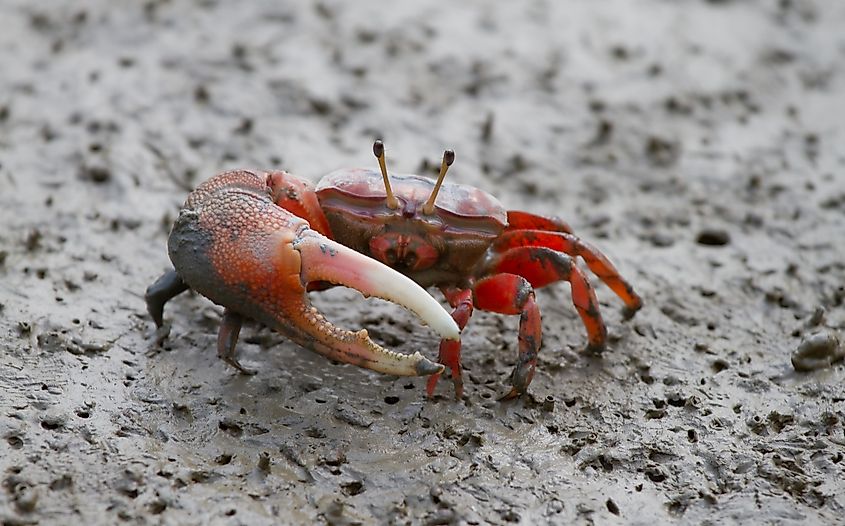
Fiddler crab refers to any of the 100 semi-terrestrial marine crab species belonging to the family Ocypodidae. These crabs can be found along the swamps, lagoons, and sea beaches. Fiddler crabs are known for their sexually dimorphic claws. The major claws of the male fiddler crabs are bigger than their minor claws while the claws of the female crabs have the same size. Just like all crabs, these crabs tend to shed their shells while they are growing. If they lose a claw or leg during their current growth-cycle, a new one grows when they molt. If the male crabs lose their large claws, another one develops on the opposite side when it molts.
Narwhale
Narwhales, also known as narwhals, are medium-sized whales that have a huge tusk protruding from a canine-tooth on their upper left jaw. Narwhale is one of the living members of the family Monodontidae. Narwhales can be found in the Arctic waters around Russia, Canada, and Greenland. Their body size ranges from 13ft to18ft, while the females are slightly smaller than the male. An adult narwhale weighs about 3,540pounds. These whales don’t have dorsal fins. Their neck vertebrae are not fused like in most whales; instead, they are jointed like those of numerous mammals.
Sperm Whales
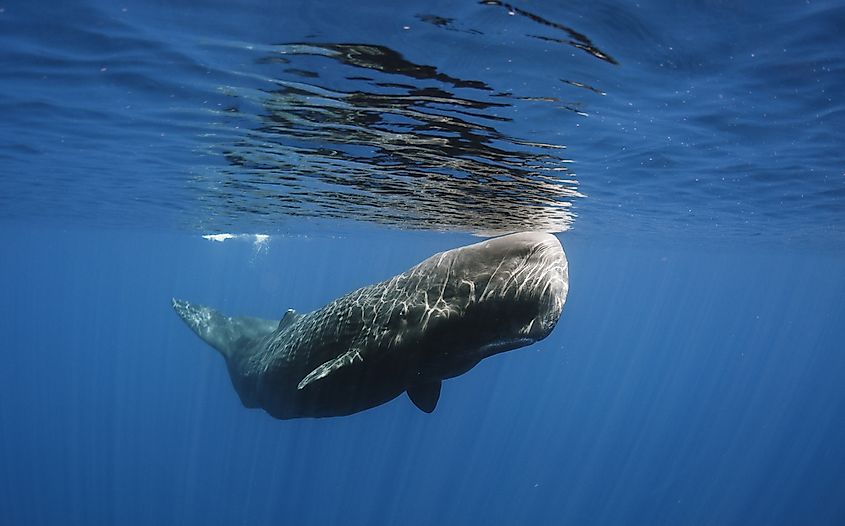
Sperm whales are the biggest toothed predators and the largest toothed-whales belonging to the genus Physeter. Sperm whales are pelagic mammals with a worldwide range, and they can migrate seasonally for breeding and feeding. Mature male sperm whales can attain a maximum length of about 67ft. Sperm whales are the second deepest diving mammals on the planet right after Cuvier’s beaker whales. Sperm whales have a single nostril, which they use as their blowholes, on the upper left-side of their heads. Their right nostrils have evolved into phonic lips, which they use to communicate.
Honey Badger
Honey badgers are the only members of the genus Mellivora, and they belong to the subfamily Mellivorinae. Honey badgers, also known as ratels, can be found in the Indian subcontinents, Southwest Asia, and Africa. Honey badgers have a maximum length of about 30inches (minus the tail) and height of about 11inches. Males are slightly larger than females. All honey badgers are symmetrical except the ones belonging to the subspecies signata. These ratels of the subspecies signata have a second molar on the left side of their lower jaw, but not on the right side.
Snails
The term snail refers to all shelled gastropods. Gastropods that lack a natural shell are known as slugs, while the ones which have small shells are referred to as semi-slugs. Snails and all other gastropods are asymmetrical. The shell of snail spirals either anti-clockwise or clockwise. Slugs are also asymmetrical.
Pareas Iwasaki
Pareas Iwasaki is a snail-eating snake species belonging to the family Pareidae. Pareas Iwasaki can be found in the Yaeyama Islands in Japan. All Pareas snakes even newly hatched Pareas Iwasaki’s feed on snails. These snakes have asymmetrical jaws, which help them feed on snails with clockwise-coiled shells. Due to their asymmetrical jaws, these snakes can only feed of snails with anti-clockwise coiled shells.
Histioteuthis
Histioteuthis, also known as cock-eyed squid, is a squid genus and the only member of the family Histioteuthidae. Histioteuthis is referred to as cocked-eyed squid because its right eye is sunken, blue, round, and normal-sized while the diameter of the left one is twice as big as the right eye. Its left eye is tubular and facing upwards. Researchers from Duke University established that this squid uses its smaller eye to detect bioluminescence from its prey and its bigger eye to see ambient light.
Perissodus microlepis
Perissodus microlepis is a cichlid fish species that are indigenous to Lake Tanganyika. It is a scale-eating fish that can attain a maximum length of about 4.3inches. Perissodus microlepis is also quite common in the aquarium trade. These cichlid fishes occur in 2distinct morphological forms. The mouth of one morph is twisted to the right making it possible for it to feed on the scales of the left flanks of its victim. The mouth of the other morph is twisted to the left, enabling it to consume the scales on the right side of its prey. The abundance of these 2mophological forms is regulated by frequency-dependent selection.



